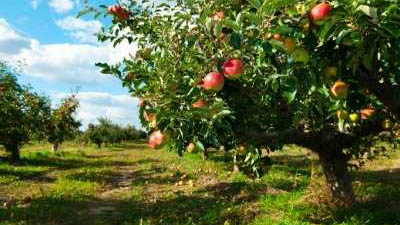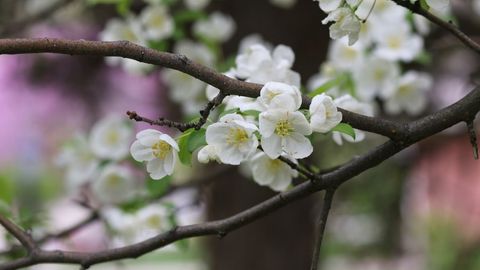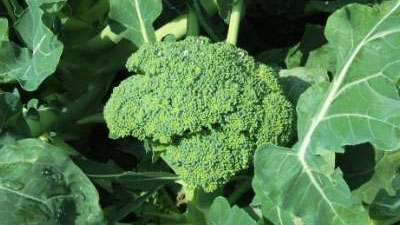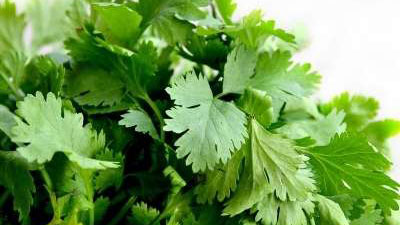How to Grow Chokecherry in Your Garden

Summary
Chokecherry (Prunus virginiana), also known as bitter-berry or wild cherry, is usually grown as a large shrub but can also be trained to be a small tree. It is native to North America and can be found growing wild in most counties of Utah. Fragrant cream-colored flowers bloom in the spring, and develop into small dark red to black fruit with relatively large pits. Chokecherries are not usually consumed raw; rather they are processed to make preserves, juices, wines, syrups, and jellies. Recently, chokecherry has gained popularity as a health food due to its high antioxidant levels. This tough plant can grow in most soil types and with minimal water. It is also very cold tolerant, making it an excellent choice for home fruit production in harsh climates.
Recommended Chokecherry Varieties
Although wild chokecherries are quite astringent, there are some cultivars that produce more palatable fruit and will do well in a home garden. ‘Boughen’s Chokeless’ (sometimes sold as ‘Boughen’s Sweet’) produces large, non-astringent fruit that have even been described as sweet. ‘Maskinonge’ is another non-astringent cultivar and produces high quality fruit. In addition, this bush does not heavily sucker. Both ‘Boughen’s Chokeless’ and ‘Maskinonge’ are typically grown as large shrubs and will grow to be about 6 to 8 feet wide and 8 to 12 feet tall. ‘Canada Red’ and ‘Shubert’ are widely popular purple-leafed ornamental cultivars, primarily grown as a small tree instead of a shrub. Both produce large black fruit.
How to Grow Chokecherry
Soil
Chokecherries occur naturally in a wide variety of soil types and pH levels. They grow well in soil ranging in pH from 5 to 8. This wide adaptability makes chokecherry an excellent choice for sites with poor soil where a fruit crop is still desired. However, well-drained soils with lots of organic matter, and sufficient irrigation water will help ensure larger, more abundant fruit.
Soil Preparation
Soil testing can help determine the appropriate amendments to add to the site before planting. Apply any deficient nutrients as indicated from soil tests, to the planting area and till into the soil.
Plants
Chokecherries are a woody, deciduous perennial. They grow in zones 2 to 10 and are found in all but 6 of the 50 states. They are grown either as a large erect shrub or a small tree. Size varies by cultivar, but most plants will not reach over 30 feet high and 10 to 20 feet wide when mature.
Chokecherry leaves are oval to somewhat oblong. They are glossy dark green on the top and lighter green on the bottom in early spring. Leaves of ‘Canada Red’ and ‘Schubert’ start out green in the spring and turn reddish purple as they mature. In general they do not have noteworthy fall color. The leaves have an alternate arrangement along slender reddish-brown stems and the stems have horizontal rows of raised air pores called lenticels. They have a deep rhizomatous root system that extends beyond the drip line of the tree. Due to this, chokecherry plants are prone to suckers, particularly if the roots are damaged. It is best to plant them in an area where suckering can be tolerated.
Depending on location, flowers open anytime from late April to July. The inflorescences are very fragrant and form in long, dense clusters or racemes of creamy-white flowers. These long clusters grow on the last year’s leafy twig growth and appear before the leaves are fully developed. Chokecherry fruits are drupes, having a fleshy outside with a stone center that contains the seed. It takes 10 weeks for fruit to fully mature, which depending on location and elevation, is usually from July to September. Most plants will not begin fruiting heavily until their 3rd or 4th year.
Planting and Spacing
Plant in the spring or fall to allow time for root establishment before summer heat. Spacing will depend on cultivar, but as a general guideline, chokecherry plants should be spaced 5 to 8 feet apart. A gentle east or northeast slope helps reduce frost risk as slopes allow for cold air drainage. If planting multiple plants, run aisles north and south to help equalize light distribution and reduce wind. Before planting, prepare a hole twice the width and the same depth as the container or roughly the same depth and somewhat wider than the roots of the bare-root plant. Immediately after planting, water heavily to settle the soil around the roots and to remove air pockets. Applying mulch around the plant will help keep the soil moist between watering and keep weeds down.
Irrigation
During the first season, irrigate at an interval that will keep the soil moist, but not wet. Depending on rainfall and temperature, irrigate about two times per week to ensure establishment. For the next few years, maintain a bi-weekly watering program that will apply about 30 inches of water over the season. This can be reduced if there is significant rainfall accumulation. Although chokecherry plants are extremely drought tolerant, irrigation will improve yield and fruit quality. To keep the canopy dry and prevent disease occurrence, water at the base of the shrub. This may be accomplished with a drip system or deep watering with a hose.
Fertilization
Currently there are no specific recommendations of fertilizer application for chokecherry production. However, having the soil tested to determine current nutrient levels is helpful for making fertilization decisions. Applying a general, balanced fertilizer each spring (such as 4 ounces of 16-16-16 per plant) should meet most chokecherry nutrient needs. Adjustments in fertilizer application should be determined by plant growth, harvest and leaf color.
Pruning
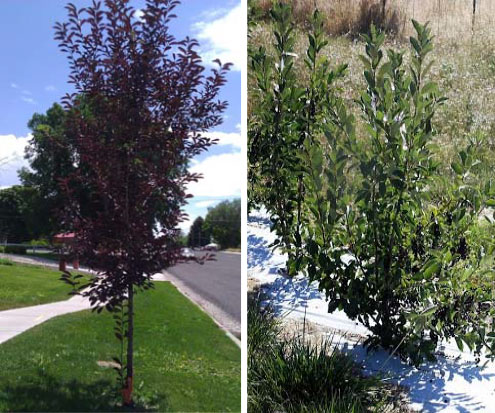
Chokecherry can be trained as either a tree or a shrub. Regular pruning prevents chokecherry plants from becoming brushy and unproductive. Pruning should be carried out in late winter or early spring, prior to bud break. When training as a tree, the center of the plant should be thinned to keep it open for air circulation and light penetration, similar to other stone fruits such as peach or cherry. When trained as a shrub, renewal pruning, removing about one third of the old growth, will ensure adequate 1-year old wood for continuous production. In either case, low spreading branches should also be removed. Plants should be maintained at about 6 to 10 feet in height to facilitate easy harvest. Since fruit forms on young wood, remove older, weaker wood annually.
Problems with Growing Chokecherries
Pests and Diseases
| Pest /Disease | Identification | Control |
|---|---|---|
| Prairie Tent Caterpillar, Eastern Tent Caterpillar | Mass of webbing on branches. ½ inch light green caterpillars. Defoliation / deformation. | Destroy tents on cool days with larva inside. Foliar insecticides or BT application. |
| Aphids | Black or green soft bodied insects feeding on underside of leaf. | Insecticidal soap, horticultural oil, malathion. |
| Chokecherry Gall Midge | Bright orange larvae feed in infested fruit. Fruit will enlarge and seed aborts. | No registered insecticide for this pest. Remove and destroy damaged fruit in early summer. |
| Black Knot Fungus (Dibotryon morbosum) | Long, black swellings on tips of branches. | Prune out and burn infected branches. Fungicide. |
| Bacterial Spot (Xanthomonas prunii) | Leaves with red to purple spots that eventually become small holes. Fruit also develop brown spots. | Sanitation, avoid over-fertilizing with nitrogen. |
| Canker Fungus (Valsa cincta) | Sunken cankers on branches and trunk that lead to girdling. | Remove and burn infected branches. Fungicide, remove plant. |
Toxicity of Chokecherry
Wildlife also consume the fruit and help spread the seeds. However, the leaves, stems and pits of chokecherry are toxic. Poisoning generally occurs if an animal consumes over 0.25 percent of its bodyweight in less than an hour. Non-lethal exposure usually results in a stomach ache. Wilted or stressed leaves are more dangerous due to higher cyanide levels. The fleshy part of the fruit is not toxic. Separate out the pits during processing to avoid contaminating the fruit flesh with the toxin.
How to Harvest, Store, and Use Chokecherries
For best results, harvest chokecherries once fruit are fully ripe. Typically, this is when they have turned dark purple, black or dark red. Fruit can be dried, used in jams, jellies and syrups or to make wine.
Chokecherry Yield Potential
The chokecherry has a relatively long lifespan of 20 to 40 years. After a plant has established, some varieties can produce up to 30 to 40 pounds of fruit per plant per year.
References
- USDA NRCS Plant Fact Sheet. 2009. Black chokecherry Prunus virginiana L. var. melanocarpa (A. Nelson) Sarg. <plants.usda.gov/factsheet/pdf/fs_prvi.pdf>
- Bjerke, M.R. 1999. The chokecherry tree. <ndsu.edu/pubweb/chiwonlee/plsc368/student/papers99/mbjerke/index.htm>
- Oregon State University. Common chokecherry. <http://oregonstate.edu/dept/ldplants/prvir.htm>
Utah State University Extension
Peer-reviewed fact sheet
Download PDF
Authors
Sky Wiser, Student; Tiffany Maughan, Research Associate; Brent Black, Extension Fruit Specialist
Related Research



